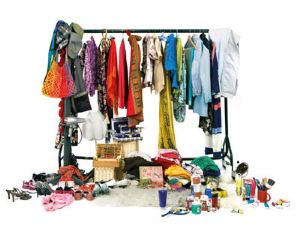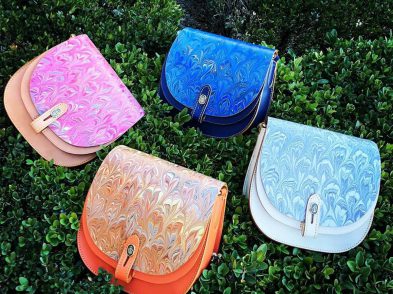Something strange appeared in suburban Florence
about a year ago. We woke up one morning to find shiny brown bins for organic
waste in the street and neat plastic bins and wads of organic-waste-disposal
bags on every doorstep. The rubbish fairy had come in the night.
According to Quadrifoglio, these bins are for all
kitchen waste, animal and vegetable, and small quantities of garden waste like
leaves and cut grass. The Case Passerini processing plant in Sesto Fiorentino
(See TF 107) can compost up to 68,000 tons of household organic waste annually,
along with 18,000 tons of cuttings that come from the maintenance of the city’s
public parks and green areas.
During my recent tour of Case
Passerini, I found out what happens to all the egg shells, carrot peelings and
coffee grinds that end up in the organic bins. This part of the plant is like a
huge warehouse, full to the rafters with piles of freshly unloaded organic
waste the size of two-storey buildings.
The floor is thick with slime,
and massive tractors with front-end loaders overflowing with steaming waste
lumber around noisily. To stand in the middle of all that is to feel
ridiculously small and extremely clean. A quick look at the newly arrived waste
showed that not everyone yet quite has the hang of using the organic bins: I
saw a full set of plastic Christmas tree decorations and our guide pocketed a
glinting 100-lire coin.
The organic waste brought here
is taken out of the plastic bags (any bags will do, not just the brown ones)
and ground into small pieces. In the space of just two weeks, it’s transformed
into silky, rich, dark brown, healthy compost. The compost process is
remarkable: once sorted and chopped, the waste is piled into enormous sealed
storage tanks known as bio-cells, each about the size of a large shipping
container.
The temperature inside each tank is closely monitored
and kept above 60 degrees to ensure that bad bacteria is killed and good
bacteria that supports decomposition thrives. The moisture level is also
controlled, as is the flow of air through the tanks, both of which are an
essential part of the composting process. The air coming out of the tanks is ‘washed’
before being released.
After a couple of weeks, the tanks are opened and the
compost is chopped and sieved again before being stockpiled. Each pile of
compost is labelled and can be traced to a particular day’s collection. Through
this magical process, trash is turned into a useful, sellable product.
Unfortunately, it seems that making compost in such
huge quantities is a lot easier than getting rid of it. You might imagine that
farmers, garden centres and agriculturalists would be queuing up for this DOC
compost. Instead, Quadrifoglio has to pay to have it taken away. The kind of
large-scale farms that could use sizeable quantities of compost mostly prefer
the quick fix of chemicals and pesticides, which they find cheaper and easier
to transport and use. At least for the moment, what is otherwise a perfect
system for dealing with organic waste sadly falls down at the final hurdle.
Other regions, like Emilia Romagna have managed to
overcome this issue, however. Let us hope that it’s only a question of time and
marketing before Tuscany catches
up. In the meantime, keep bagging and binning those potato peelings.
Melissa Morozzo has been living in Tuscany for eight years and can just about use the Italian
subjunctive. Se io fossi in te, andrei a leggere il suo blog: http://melsdaily.blogspot.com.
Green News
FLORENCE is one of five Italian cities taking part in Raising
Awareness on Climate and Energy Saving (RACES). As part of this project,
families are randomly selected and given a tutor to teach them how to reduce
their carbon footprint and, consequently, also their household bills. Energy
use and savings will be measured over the next year. RACES is funded by LIFE+,
an initiative of the European Commission that funds hundreds of environmental
projects all over Europe. For more information, see www.liferace.eu
YOU COULD BE forgiven for not realising it, but
Tuesday, September 22 was European Car Free day. The day was celebrated in Florence
by Firenze In Bici, the local cyclists’ association. Volunteers manned four
busy crossroads during rush hour and gave out free chocolates to cyclists. The
idea was to give a big pat on the back to those who brave the city’s street on
two wheels. The initiative, supported by Federazione Italiana Amici della
Bicicletta (FIAB), was also held in other cities across the country. To find
out more about Firenze In Bici, or become a member, go to www.firenzeinbici.net
TUSCANY has beaten Italy’s other regions for recycling paper, with 91 kg per inhabitant
collected and recycled in 2008. The 14th Comieco report, which revealed this
statistic, also states that the amount of paper and cardbaord recycled between
1998 and 2008 would have otherwise filled 170 rubbish dumps.







